The Swedish Navy: Facing the USSR
Sweden’s Fleet dominated the Baltic in 1947 and for some years after while her war-ravaged neighbours recovered. New ships and vessels, from heavily armed, very fast cruisers to small high speed MTBS were built, delivered and commissioned. New classes of destroyers, submarines, torpedo-boats and minesweepers joined the Royal Swedish Navy.
 In 1990:
In 1990:
-12 submarines
-29 FACs
-2 missile Corvettes
-18 Patrol Boats
-3 Minelayers
-22 Minesweepers
-6 icebreakers
Uniquely, it acquired nuclear weapon proof bunkers carved out of cliffsides to shelter and hide submarines and ships up to destroyer size.
From 1958 the five year defence plans changed to the disadvantage of the navy – and later also of the army and the air force. The idea of a ‘light navy’, no longer including coastal battleships or cruisers as backbones of the three task forces, was followed by a theory of light task forces of only one or two destroyers with one or two squadrons of large torpedo boats and, of course, submarines, coast defence flotillas of small MTBS, minesweepers, etc.
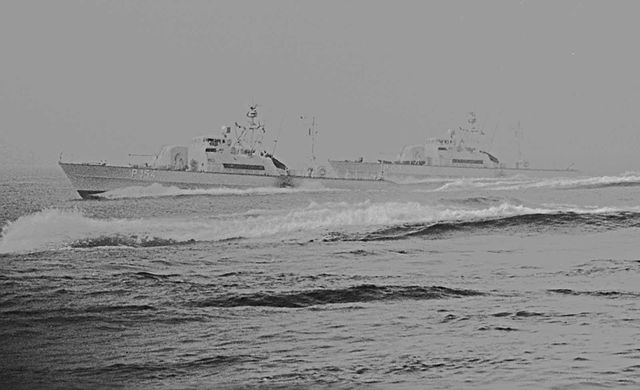
Early Swedish missile Fast Attack crafts: Mode and Magne in the 1960s.
However, this “lighter” navy could not be maintained. The last cruiser, Göta Lejon, was sold to Chile in 1971. Two missile destroyers and one ocean minelayer were cancelled. Destroyers were reclassified as frigates after or without being equipped with modern ASW weapons. The submarine force fell by half between 1975 and 1982.
During the Cold War, the Swedish Navy had to deal with almost constant intrusions into Swedish territorial waters, there being forty such incidents in 1982 alone. Despite heavy depth-charging and detonation of ground mines, all these intruders escaped. Combating this problem was an important task for the navy, and a mini-sub was built in the late 1980s as an ASW target, simulating the type of vessel believed to be involved.
By 1985 the two remaining destroyers had been disposed of, but numbers of light craft had increased, with torpedo boats being fitted with a new Saab SSM and new classes of submarine being commissioned. Uniquely, the Swedes persisted with work on air-dependent conventional propulsion systems for submarines, when the major navies had abandoned them for nuclear boats, and in 1996 the first operational class of submarines with such propulsion systems will enter service (the Götland class).
The Swedish submarine industry scored an export success in 1987 with the sale of the Collins class boats to the Royal Australian Navy, claimed to be the most sophisticated conventional submarines in the world. 2000s models included air-independent main engines and radical new hull forms.
In 1995, naval personnel totalled 9,150, plus 6000 reserves. Coastal Artillery Service had 3900 active personnel organised into five regiments and 3000 reservists, which operated both static and mobile coast-defence gun and SSM batteries, as well as a number of mine warfare and patrol vessels. Principal naval bases were at Karlskrona and Muskö. Although an even ‘lighter’ fleet than in 1947, the Swedish Navy has remained a capable and powerful force centred around submarines, missile combatants and mine warfare vessels.
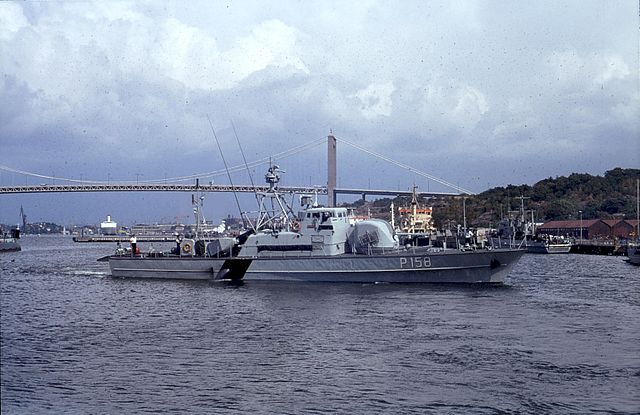
FAC(M) Mysing (P158)
Situation after the end of WW2
In 1945, Sweden became de facto the pre-eminent naval power in the Baltic after the comprehensive destructions of the Soviet Baltic fleet and Kriegsmarine.
On paper its force was indeed impressive:
Coastal Forces: Three Aran class Coastal Battleships (CB), three Sverige class, Oscar II.
Cruiser forces: Fylgia, Gotland, two Tre Kronor class in construction. So four cruisers in 1947.
Destroyer force: Three Sigurd class, Hugin, two Wrangel class, two Ehrenskold class, two Psilander class, Klas Horn, two Romulus class, six Göteborg class, four Magne class, four Visby class, two öland in completion: 29 in 1947.
Submarine force: Draken, Delfinen, Sjolejonet, Neptun, U1 classes: 26 in all, the last completed in 1946.
Misc. Vessels: Four Ane class Landing crafts (1943), the minelayers Clas Fleming (1912, 1735 tons), Alvsnabben (1943, 4250 tons), 4 MAS, 2 Vosper, 15 domestic-built MTBs, 50 minesweepers, about 70 patrol boats of the V and SVK type, 2 icebreakers.
See the complete WW2 Swedish Navy
Of course, the coastal battleships were obsolete designs dating back for some to 1890. Of all these, the last to go was HMS Gustav V, used from 1957 as a training ship. They were all stricken in 1947-57. The cruiser Fylgia was discarded in 1953 and the more modern Gotland in 1960. The ambitious Tre Kronor class, largest cruisers ever built in Sweden, were found irrelevant in the 1960s. The first, Tre Kronor, was stricken in 1964 and the second was resold to Chile in 1971. She served until 1984 as Almirante Latorre.

HMS Svea, imagined by WoW as an alternative to the tre Kronor class.
For destroyers, many were also discarded in 1947-58. The exceptions were the Ehrenskold class, converted as ASW frigates like British and US vessels. They stayed active until 1968 (see below).
The Italian-built vessels served until 1949-59.
The more recent Göteborg class served until the 1960-1970s, Gavle being converted as a nuclear floating test facility after 1969.
The Mode class were also discarded in the 1960s, but the four Visby class were converted as ASW frigates in 1965-68 and served until 1979-82.
The öland class were modern enough to be kept in service and upgraded until stricken in 1978.
Misc. ships were discarded at various dates, some stricken as early as 1946, but some soldiering on until the 1980s (like the minelayer Alvsnabben, in 1982) or the 1990s like the Ane class landing crafts.
Swedish Aircraft Carrier 1946
This project is only known through detailed sketches (but no blueprints). It was part of the ambitious naval plan of WW2 which saw a drastic increase in shipbuilding, notably with the Tre Kronor cruisers, new destroyers and submarines. This was a rather small carrier, displacing just 8,000 tonnes, well protected, armed, and still carrying a provision of twenty jet fighters. It was perhaps too ambitious as a design due to the limited size and displacement, forced upon by the limited size of Yards basins.
The general appearance resembled a British carrier, with a large bridge island, rounded fore an aft deck, two lifts in échelon in the middle of a straight deck which as shows in the upper view, only allowed folder wings planes to be stacked alongside, an little space available for the jets to take of in straight line from the back of the deck – There was however what could be a catapult forward (“even accelerator”) otherwise these jets would had to take off in about 130 meters. The project did not went very far from a proposal to the admiralty, there was no official name associated, and she was never ordered. Conways is totally silent about it as well. See the authority signing the sketch.
Specifications: As shown in the drawings
Dimensions: 140m wl/148.2 m oa x 20 m wl/28.4 m oa x 5.5 m
Displacement: 7,800 tonnes standard, 8,100 tonnes FL
Machinery: 28,000 shp: 25 knots max.
Aviation: 20 de Havilland Sea Vampire carried
Armament: 4×2 12 cm, 16x 40mm Bofors, 17 25mm
Armor: 3-in (75 mm) belt, 25 mm torpedo bulkheads, 25 + 50 mm deck
Crew: 535 men
Coastal defences and naval districts until 1948
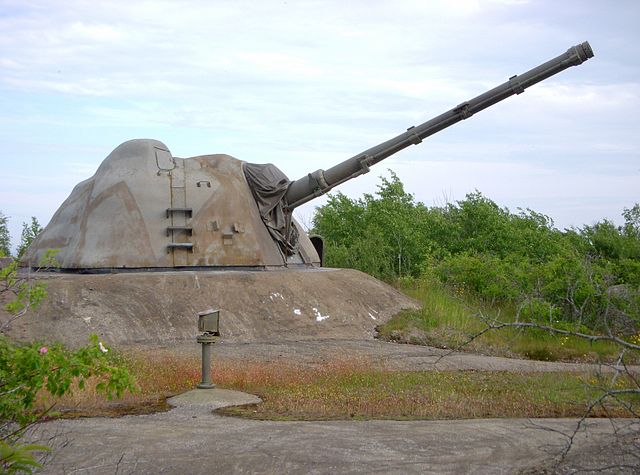
120 mm semi-auto DP battery (tornautomatpjäs m/70) installed Landsort. This weapons system called ERSTA (Ersättning Tungt Artilleri or “Replacement Heavy Artillery”) replaced all previous coastal artillery used in Sweden and became quite ubiquitous. These batteries were installed in nine locations, six in Sweden, at Söderarm, Landsort, Asunden (Gotland), Källesjö near Ystad, Gylle near Trelleborg and Holmögadd near Umeå. There were also three Norwegian installations, at Andfjorden near Harstad, Ofotfjorden outside Narvik and Kråkvågfjorden outside Trondheim.
The Swedish Navy’s Coast Artillery was formed on January 1, 1902 as part of the Navy. From January 1928 it was divided into six marine districts. There was a lack of clear commands and uniform management for the Swedish coastal areas in case of war however. The six naval districts played however an important role as regional commands. From 1936 decree by the Riksdag (parliament) these naval districts were under a single command from 1937. It had a centralized organization with staff, personnel, curatorial administration, medical management, a camera office, ship depot, naval depot, coastal detachment and fishery protection division. In 1948 a new decree reduced the number of marine districts by two, and introduced the concept of marine guard areas, subordinated to marine districts.
From 1948 the old coastal forts were still active for a time and were not modernized, in case of a possible Soviet attack in the Baltic. After a sturdy in the 1960s, as part of the STRIL 60 program which should have comprised Rb 08 anti-ship missile installations too. 10 locations were chosen and production of the first guns started in 1971.
These were developed to defend vital points from enemy landing ships and area control or antiship and fire in a nuclear context (they are NBC-proof).
However after budget cuts, Only six 12/70 batteries were maintained and EMP protection was no longer pursued. Also both the crew and support installation were reduced to the bare minimum. Each of these six batteries counted three fully independent gun emplacements with a command center, ranging stations and AA Bofors guns for close defense, plus mortar positions and troop shelters in case of an enemy landing. They were installed either in blasted holes or natural ones.
The gun was fully automatic, water-cooled vertical sliding wedge, electrically-driven for traverse but with manual elevation. Fully prepared for a nuclear war, the turret is hydraulically lowered and anchored to its foundation, the interior has a liner and both its muzzle and mount aperture are automatically sealed before the lowering. After a nuclear blast, it was assumed the crew, evacuated in the sealed vault behind the turret could reoccupy the latter soon after.
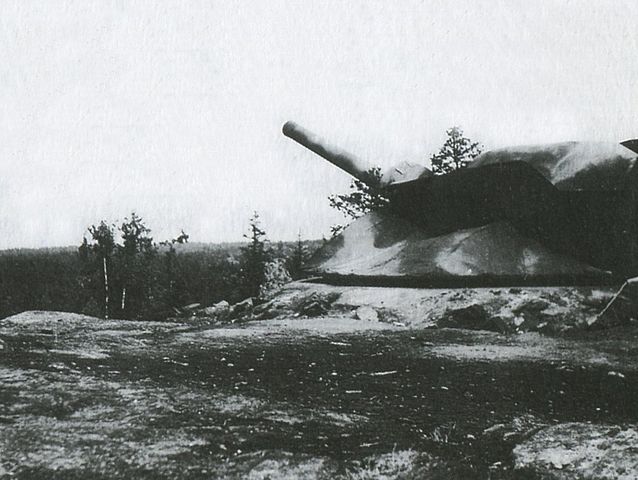
Batteri Järflotta (1942), which stayed in service for the whole cold war.
The remainder, older fortifications were equipped with guns dating back from WW1 from some. The modernized Boden Fortress for example was only deactivated in 1998. Sooner, this was the case of the Degerberget Fort, and the Fort Oscar II. However the Skåne Line (1941) was maintained until the late 1950s, whereas the Järflotta Fort (1942) stayed active also until the 1990s.
Reorganization of 1957
On October 1, 1957, naval districts were reorganized into naval commands. There was now a clear separation from coastal defense. In July 1, 1958, these had their own authority, whereas the coastal artillery command became a defense area command. The new Swedish Navy organization consisted of a staff management and an administration for coastal artillery brigade, ships and helicopters associated.
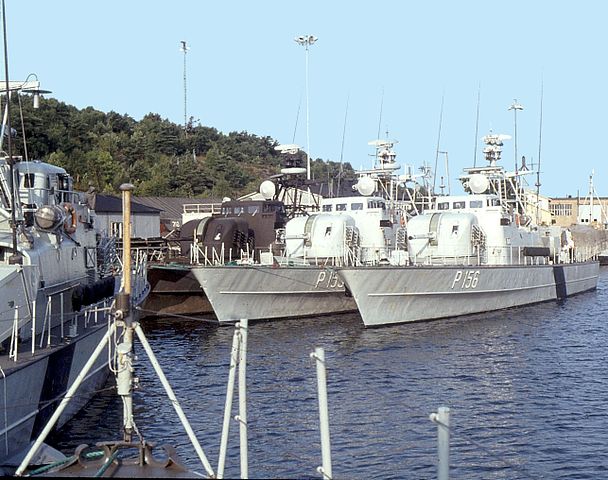
Two Hugin class FAC(M)
Reorganization of 1966
On October 1, 1966, a new regional command was established whereas overall operational command was unified with a single military commander. Naval commands were reorganized into naval bases, subordinated to this new military commander, assimilated to the Navy chief of staff. Three commands were reorganized into naval bases:
-Marine Command Nord comprising the Norrland’s coastal artillery.
-East Coast War Base (ÖrlB O)
-Roslagen’s war base (Uppsala)
These war bases included staff and administration, plus a coastguard with affected ships and helicopters.
Integration of the Swedish Navy in other branches during the cold war
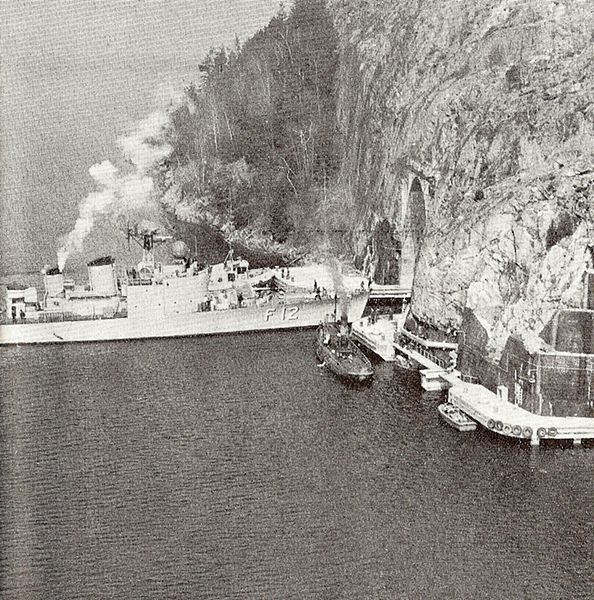
Muskö naval base, HSwMS Sundsvall entering a pen in the naval base. Built in several stages from 1950 to 1969 in Concrete, stone, steel, this was the largest “nuclear-proof” naval base of Sweden. This unique underground naval facility was based on the island of Muskö, south of Stockholm. It has three docks, large enough for two destroyers and two submarines. Kept highly secret during the cold war it was only fully unveiled to the public from 2004, when it was decided to concentrate efforts in Karlskrona Naval Base and the Berga Naval Base. The only raison d’être of the complex was indeed the nuclear threat posed by USSR.
Sweden, although neutral, was the first country past Finland, in the path of the mighty Soviet Army. Most scenarios of invasion from the latter involved the violation of Swedish territory. So
Sweden one of the most militarized countries in the area and despite a 7-8 million population was able to mobilize 800 000 conscripts. Its shining pride was its modern air force, made of ground-braking jets developed in total autonomy, compounded by the use of dispersed road bases making its destruction nearly impossible. The army was equally well equipped and also dispersed throughout the country in mobilization stores. For communication and storage, Sweden counted a network of well managed and adapted caves and mines. The possibility of nuclear warfare did not hampered the command and control functions at any level.
The extensive civil defense system provided a large array of bomb shelters, in fact there was enough room for each citizen. During the cold war, many citizens were granted the right to built their own NBC compound, in their garage, cave or in the garden. In addition, vast stores of food, medical supplies, fuel existed, in order to be consumed by the whole country and to last for a year.
The fleet in 1966:
-1 Cruiser: Gota Lejon
-8 destroyers (4 missile)
-8 ASW Frigates (4 in conversion 1966)
-19 submarines (+5 in construction)
-About 120 Landing crafts (LCU, LCA, Grim class)
-23 MTBs
-12 FACs (6 in construction)
-16 Patrol Boats
-1 minelayer
-44 minesweepers
-4 icebreakers
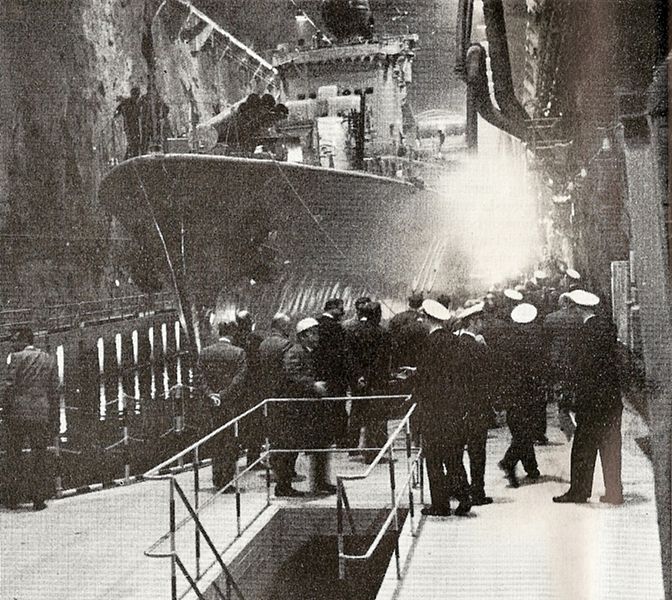
HSwMS Småland in one of the underground pens in Muskö naval base (1960). This could be used as a NBC-proof drydock as well.
The navy was however small in comparison but purposedly built to wage war in the archipelago of the coast line. In addition to cutting edge submarines, a fleet of MTB/FACs, and a comprehensive use of mines guaranteed extra protection, channelling enemy forces towards coastal battery range. In 2005, after a carrier was “sunk” in exercize by a Swedish sub, the US Navy borrowed one to test it versus nuclear submarines and found it way harder to hear them and this ended with a full time leasing for more practice.
Sweden innovated in this field, using Stirling engines for maximal discretion, as these theoretical engines generated no vibrations. Swedish missiles carried in its tubes are very capable too.
1982 Reorganization
Prior to the Defense Decree of 1982, the Commander-in-Chief of the Navy proposed cost and staff reductions concerning the East Coast. Increased coordination and part fusion between the operations of the East Coast War Base and Berga War Schools.
Roslagen’s war base was relocated to Muskö that year, and merged into the East Coast’s base. Its Division was terminated on June 30 that year and assets relocated to the East Coast Base. Between 1986 and 1990, other reforms were carried out and ultimately all naval bases merged with the coastal artillery defenses unified into naval commands.
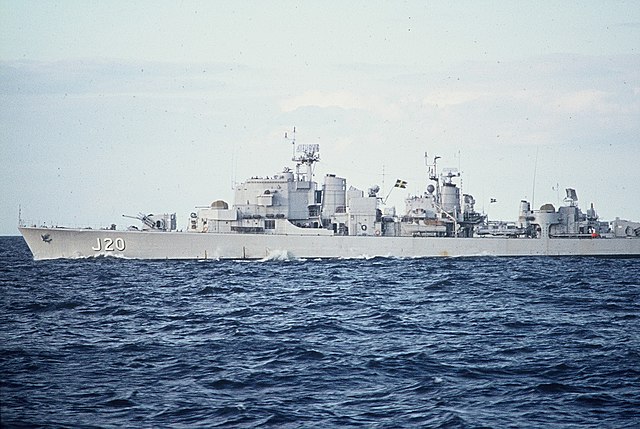
The destroyer Ostergotland
The cold war Swedish Navy in action: Incidents
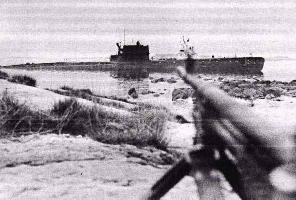 These were many submarine incidents during the cold war in Swedish waters. They mostly involved Soviet submarines and these were recognised by NATO as the “hottest” during the whole cold war, with those around North Korea.
These were many submarine incidents during the cold war in Swedish waters. They mostly involved Soviet submarines and these were recognised by NATO as the “hottest” during the whole cold war, with those around North Korea.
In many of these incidents (around 20 listed), the intruders were simply driven off by depth charges, but in one occasion, the U 137 incident (1981), a soviet submarine was grounded, officially, because of navigation compass failure. The first incident was reported in 1962, followed by 1966, 1969 (20 days submarine hunt in Swedish waters), 1969 (sub-to sub encounter), 1974 (spotted, chased), 1976 (soviet sub found, chase), 1980, 1982, 1983 (as many as 5 violations), 1984, 86, 1987 (two incidents), 1988 and 1990 (West German sub). This went one after the cold war, with similar incidents in 1992, 2011, and 2014.
A controversy grew after the fall of the USSR, as many archives were being declassified and books were written. It happened that many of these violations for author Ola Tunander, seemed to have originated in NATO top secret operations. These submarines were on their way of spying the Russians, or were used in coordination with the Swedish Navy to play the role of the agressors. The 1980s incidents were so numerous that they spawned a famous novel in Sweden, a best seller called “The Troubled Man” (Den orolige mannen) by Henning Mankell.
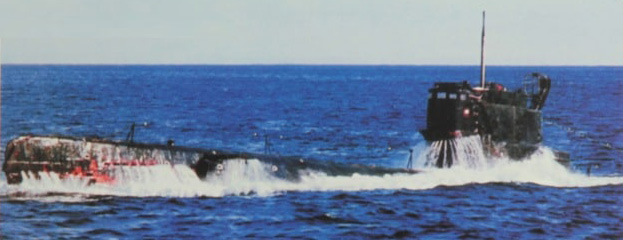
A NATO ‘Whiskey’ class submarine. In October 1981 S-366 was grounded off the Karlskrona underwater rocks, becoming for the international press the famous “Whiskey on the rocks”.
Svenska Marinen today:
post-cold war Reorganization
In FY 1995/96, the government proposed that basic training at Norrland naval command was terminated. Annual conscription in the Navy indeed has been reduced from 6,300 to 4,100 conscripts yearly. The Defense Decree 1992 made numerous budget cuts, taking in account the threat of USSR was no longer there. A commission found there was overcapacity in the navy’s training organization, and especially in the coastal artillery. Thus all training in the Norrland Coast naval command was to cease in 1997. The Härnösand Coast Artillery Regiment was dissolved a year later.
2001 reforms and bases
The government’s starting point was a report stating only two units were needed to meet the training of coastal artillery units. One was thus intended to be the main unit for coastal artillery (which of course included missiles). Prior to 2001 there were still three Coast Artillery Regiments in operations:
-Vaxholm Coast Artillery Regiment (The First Coast Artillery Brigade (KA 1)
-Karlskrona Coast Artillery Regiment (Second Coast Artillery Brigade (KA 2)
-Gothenburg Coast Artillery Regiment (KA 4)
-Gotland’s Coast Artillery Regiment (KA 3)
The Vaxholm Coastal artillery regiment was chosen to be the main unit. Indeed it had already extensive infrastructures and was close to the Stockholm archipelago. It also included training and shooting ranges and was well-dimensioned. It was also made important to maintain coordination with other units in the Stockholm area.
The support unit for Vaxholm was to be decided either for Karlskrona or Gothenburg. However it was also decided to invest more in Gothenburg and Karlskrona as they lacked practice fields before to be considered suitable as support units. Gothenburg was eventually chosen. The deciding factor what Gothenburg was Sweden’s second city and had a central location in Western Sweden, not too far away from Vaxholm. Eventually the Karlskrona Coast Artillery Regiment and Second Coast Artillery Brigade and Gotland’s Coast Artillery Regiment (KA 3) on Gotland were dissolved.
The main consequence was the practical dissolution of fixed coastal artillery. Remaining assets passed to the amphibious force. The two coastal artillery regiments became amphibious regiments, each comprising an amphibious brigade and three amphibian battalions. From June 30, 2000 all remaining forts were decommissioned, closed for overhaul, for most to be demilitarized and open to public as museums. The amphibious corps was formed in July with the Vaxholm amphibious regiment and Älvsborg’s amphibious regiment fed by the Amphibious Combat School.
The Coast Artillery Combat School was now part of Vaxholm’s amphibious regiment, it was renamed the Amphibious Combat School. This better reflected its activities.
The Riksdag was proposed by the Government that tactical organization was reduced by dismantling local defense area staffs, local naval commands and flight commands. A brand new naval and aerospace tactical command was co-located with the all-arms Swedish Operational Command. The proposal was adopted by the Riksdag, and resulted in much budget savings (and drastic personal reduction). On June 30, 2000, naval commands were dissolved, replaced by two new centralized units based on the two naval bases of Gothenburg and Vaxholm.
2004 and 2009 reforms
Prior to the 2004 decree, the government proposed to dissolve the two naval bases organization, with naval combat new tasks, and international changes, notably from NATO. The government proposed a single naval base, including a main base and a “backup base” if needed. However as it could lead to ambiguities of command and less rational organizations a single naval base was to be maintained, responsible for the entirety of Sweden’s naval defence.
A new framework was setup, which still enabled two additional locations. The new base organization should consist of shipbuilding resources for large ships maintenance and staff, plus infrastructure, quays and mooring facilities. In January 2005, this single naval base supervised several maritime information companies.
Training of amphibious units was needed and urged Vaxholm’s Amf 1 to be maintained. Älvsborg’s amphibious regiment (Amf 4) in Gothenburg had limited training facilities however and the Riksdag was proposed that the Amphibious Combat School should be discontinued, and staff and assets relocated to the Naval Combat School in Karlskrona.
The new naval program
Today’s Swedish Navy is headed by Marinchefen Rear Admiral Ewa Skoog Haslum, senior representative of the Swedish Royal Navy’s combat forces. There is no longer a vice admiral in the Navy.
This force is splitted between the:
-1st Submarine Flotilla (1. ubflj) Karlskrona
-3rd Naval Warfare Flotilla (3. sjöstridsflj) Karlskrona
-4th Naval Warfare Flotilla (4. sjöstridsflj) Berga, Muskö.
-1st Marine Regiment (Amf 1), Berga.
-Swedish Naval Warfare Centre (SSS) Karlskrona.
The current fleet counts 5 submarines of the Gotland and Södermanland classes, 7 corvettes (Göteborg and Visby classes), 9 minesweepers (Koster and Styrsö class), 13 Patrol Boats (Stockholm class and Tapper class), 147 Stridsbåt 90 (light “Combat Boats”), the long range patrol vessel HSwMS Carlskrona, the intelligence vessel HSwMS Orion, 100 G class Landing Crafts, 3 auxiliaries, 2 tugs, 1 Torpedo salvage vessel, 3 transports, 3 Griffon 2000TD Hovercrafts and 7 training vessels. In total 300 ships round, but most are of very low tonnage. The Svenska Marinen participated (marine troops mostly), to the War in Afghanistan (since 2002) and the fleet to the ongoing Operation Atalanta (since 2008) against piracy on the African horn.
Read More/Src
Conway’s all the world’s fighting ships 1947-95
//sv.wikipedia.org/wiki/Svenska_marinen
//en.wikipedia.org/wiki/List_of_ships_of_the_Swedish_Navy
//www.forsvarsmakten.se/en/about/organisation/the-navy/
//militarhistoria.se/vapen/sjostrid/gota-lejons-sista-resa
//laststandonzombieisland.com/2014/12/03/warship-wednesday-december-3-2014-the-scandinavian-leviathan/
//forum.worldofwarships.eu/topic/8524-sweden-in-world-of-warships/?page=2
//en.wikipedia.org/wiki/12_cm_tornautomatpj%C3%A4s_m/70
//www.marinmuseum.se/en/museum-ships/the-vastervik-missile-ship
forum.worldofwarships.eu/topic/9401-swedish-aircraft-carrier-cruiser-1946/
This is listing the vessels built after 1945. Some which were moderrnized or completed past 1945 are also listed there.
Cruisers: Tre Kronor class (1946)
Characteristics (1980s)
Displacement: 8,000 t standard, 9,500 t FL
Dimensions: 182 x 16.45 x 5.94 m (597x 54x 19 ft)
Machinery: 2 shaft Geared turbines, 4×4 drum Boilers, 100,000 bhp, 33 knots, 5,000 nm at 15 knots
Armament: 7x152mm/50, 20x40mm/50, 7x25mm AA, 6x533mm TTs, 2 DCR, 2 ASWM, mines.
Armor: Belt: 70 mm, deck 30 mm, turrets 50–127 mm, CT 20–25 mm
Crew: 618
Swedish Cold War Destroyers
The list is restricted there as only two class, six ships, were built during this period, up to 1959 when the last was completed. Sweden from then reversed its attention to smaller ships, FACs, Submarines and coastal warfare. There were projects though, but none passed the vote at the Riksdag.
Öland class Destroyers (1945)
Class: Öland, Uppland
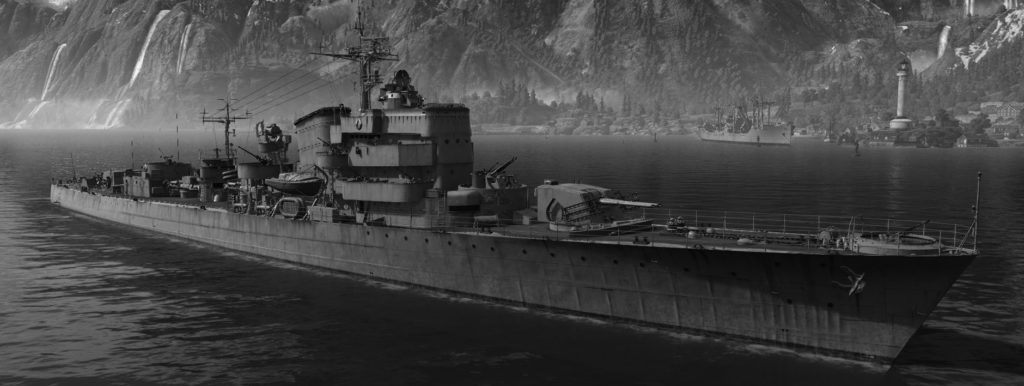
WoW’s rendition of the Öland class
Technically both destroyers has been completed in 1947 and entered service just when the cold war started in 1948, but both were wartime designs strongly influenced by US flush-deck destroyer design.
Both destroyers were laid down at Kockums and Karlskrona respectively in 1943, launched respectively in December 1945 and November 1946 and completed on 5.12.1947 and 31.1.1948 respectively. They were small by USN standard, at just 1,800 tonnes. They were not supremely fast either at 35 knots but won in versatility. In addition to dual purpose semi-automated fast-firing dual purpose 120 mm guns (80° elevation) plus six torpedo tubes and reloads, and their AA was impressive with up to seven 40 mm Bofors (HMS Uppland), eight 25 mm guns. For ASW warfare, they had the usual DC and DCTs, plus a single 357 mm Bofors quadruple rocket launcher.
They could act as minelayer as well, carrying 60. Their radius of action was 2500 nm at 20 knots, carrying 300 tonnes of oil. Crew was 210. Their machinery was protected as well as vital parts in the superstructures by additional armor plating. They were modernized, for the first Öland in 1949, 1953, 1960 and 1969 and for the second, Uppland in 1953 and 1963. Bu by 1974 they were reclassed as frigates.
They were the largest destroyers built in Sweden, and its first and last missile destroyers. Designed first for anti-ship warfare, they possessed anti-ship missiles before any one else in Europe, at the exception of the Soviet fleet.
Specifications:
Tonnage: 1880 tonnes standard (2,500 FL)
Dimensions: 112 x 11.2 x 3.4 m
Propulsion: 2 shaft De Laval geared steam turbines, 2 Penhöet boilers for 44,000 shp.
Armament: 4x 120mm/45 (2×2), 6-7×40 mm Bofors AA, 8x 25 mm AA, 2×3 533 mm TTs, 375 mm ASWRL Bofors, 60 mines.
Halland class Destroyers (1952)
Class: Halland, Smaland (+ Lappland, Varmland)
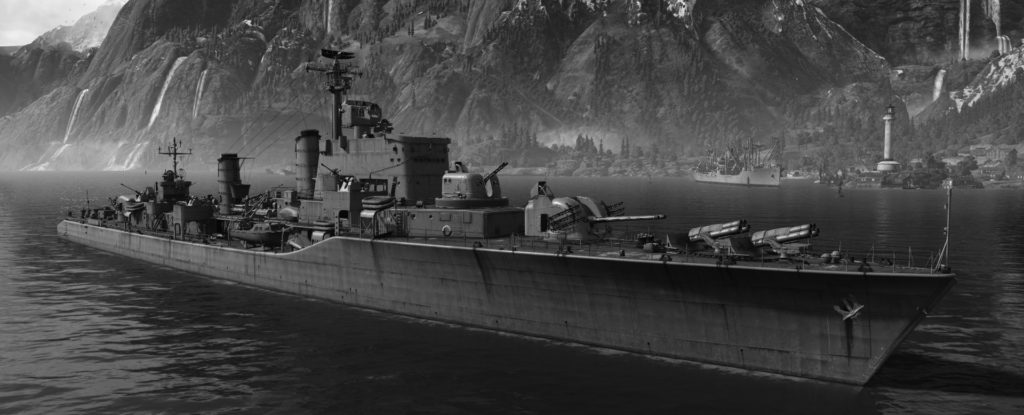
Wow’s rendition of Halland
Both destroyers were voted by the Riksdag in 1948, and later two more were voted in 1955 to be built in the same yards, cancelled in 1958. Design was completed in 1950 and construction was ordered at Götaverken and Eriksberg Yards in Göteborg in 1951. Both were launched in 1952 and completed in 1955 and 1956. They were arguably the very first European missile destroyers, aside the Soviet Navy. The first version fired the Rb315, later upgraded to the Rb08 and to the RB20. Both were modernized in 1962 and 1969 (Halland) and 1964 and 1967 (Smaland). Two more would be built for Columbia.
Their new caliber 50 Bofors guns, 120 mm were the same found in coastal fortifications later. Fully automated, they fired at 40 rpm at great angle, equally efficient against planes. The forward turrets were both fitted with three RFL or Rocket (Flare) launchers on either side. Sweden’s Bofors also developed a 57 mm variant of 60 caliber, close to what was developed in the Soviet Navy at that time. The AA panoply was completed by six Bofors 40 mm of the latest 70 caliber versions, automated. There were two TT banks, one quintuple just behind the forward funnel, and another triple behind the aft funnel, with the Saab missile launcher mounted on top.
Its magazine was below the aft superstructure. The missile was traversed by the TT bank.
The latter fired the wire-guided Torped 61, designed in Scandinavia and shared by Norway and Denmark as well.
For ASW warfare, they carried two quadruple Bofors 375 mm Rocket Launchers installed on the forward, near the prow. Originally they were fitted with the LW3 radar, later replaced by the PEAB 9LV 200 Mk2 radar, also replacing the Mk45 fire control sets.
These destroyers were heavily armed for their time, moreover on such a small package. They were discarded in 1985, about the same time as the Colombian ships in 1985-86.
Specifications:
Tonnage: 2630 tonnes standard (3,400 FL)
Dimensions: 121 x 12.6 x 5.5 m
Propulsion: 2 shaft De Laval geared steam turbines, 2 Penhöet boilers, 58,000 shp, 35 knots
Armament: Saab Rb08A SSM, 4x120mm/50, 2×57 mm AA, 6×40 mm Bofors AA, 8×533 mm TTs, 2×375 mm ASWRL Bofors, 6×103 mm RFL, 60 mines.
Sensors: Radar Scanter 009, Thomson-CSF Saturn, HSA Mk22, Sonars
Ostergotland class Destroyers (1956)
Class: Ostergotland, Sodermanland, Gastrikland, Halsingland
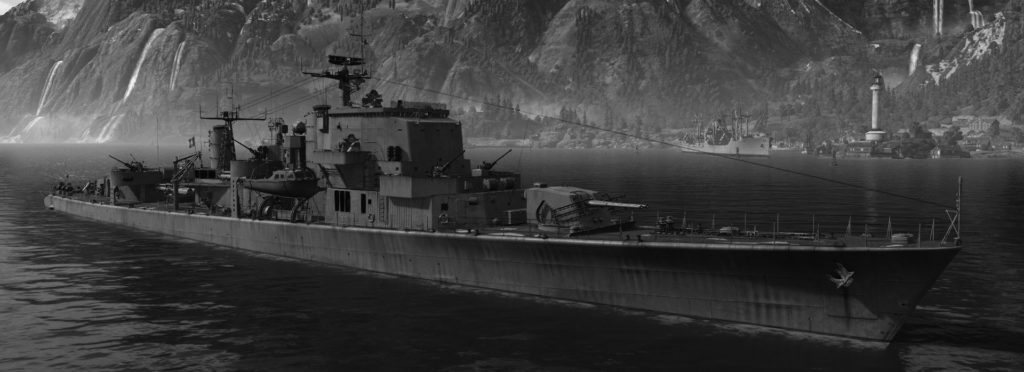
Wow’s rendition of the Ostergotland
All four ships were voted in 1953, they signalled a return to the smaller, cheaper and more conventional flush-deck Oland design, but with a modern squid ASW launch system. There was a single sextuple TT bank for the Torped 61, and 12 RFL (Flare launchers), installed on both turrets, no 57 mm AA and only 40 mm Bofors. Built in the same yards as the Halland vessels, they were launched in 1956-57 and completed in 1958-59. Modernized in the 1960s, their 40 mm Bofors were replaced by one British Seacat SAM system called Rb07. Pennant numbers J20-23, “J” standing for “Jagare”, “hunter” for destroyer. They were discarded in 1982-83, the last ever Swedish destroyers, now relics of the cold war.
Specifications:
Tonnage: 2150 tonnes standard (2,600 FL)
Dimensions: 112 x 11.2 x 3.7 m
Propulsion: 2 shaft De Laval geared steam turbines, 2 Babcock boilers, 47,000 shp, 35 knots
Armament: 4x 120mm/50 (2×2), 7×40 mm Bofors AA, 6×533 mm TTs, Squid ASWRL, 60 mines.
Sensors: Thomson-CSF Saturn, HSA Mk44-45, Sonars
Swedish Cold War Submarines
U1 class subs (modernized – 1963)
No known photo
This class dated back from 1940, with nine built until the end of the war, the last, U9, launched in May 1944. They decent but small, coastal 378 tonnes boats. Instead of being scrapped in 1960, they were taken in hands for a full modernization. When out of this process in 1964 they featured a streamlined single hull and fin, plus modern sonars and equipments, rebranded as hunter killers. Their displacement was not 388 tonnes. Their second career was short lived, as they were scrapped gradually in 1970-76 for the U-4 – U-9 modernized.
Specifications:
(To come…)
Hajen class subs (1954)
(To come…)
Draken class subs (1960)
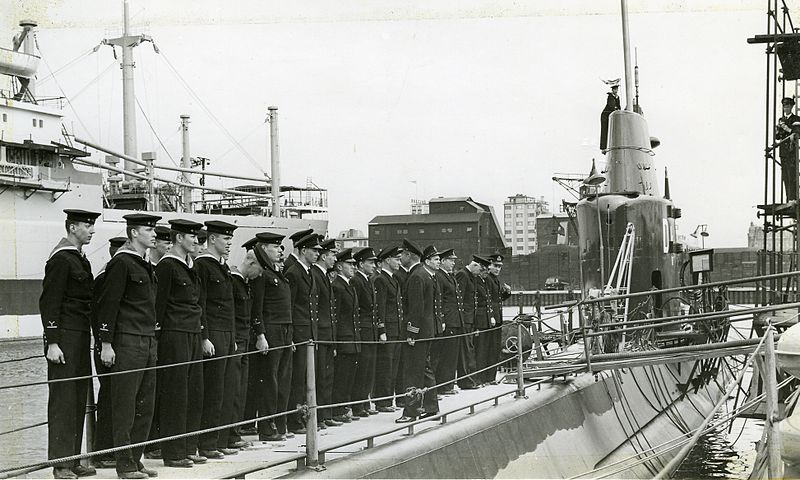
HMS Draken and crew during a review
Sjoormen class subs (1967)
(To come…)
Nacken class subs (1978)
(To come…)
Vastergotland class subs (1986)
(To come…)
—-Post cold war (started 1992)—-
Gotland class subs (1995)
Their successors are the Blekinge-class submarines, the 1900 tonnes, 2000s generation. Called A26 type, they were delayed several times, until the first was laid down at Kockums in 2015 as HSwMS Blekinge, with the second named HSwMS Skåne. Expected commissions are 2024 and 2025. SAAB market these for export in three variants: The AIP has an endurance of 20 days. The “Oceanic” measures 65 meters and has an autonomy of more than 30 days. The third, called “Extended Range” is over 80 meters long and is capable of 10,000 nautical miles, perhaps 50 days+ plus at sea according to the constructor (navaltoday).
Swedish MTBs and FACs (1960-70s)
Swedish Yards already had some experiences in MTBs, studying both Italian and British designs (Baglietto and Vosper) in the 1930′ and cranking up in 1941-43 a serie of 22.5-27 tonnes boats, from T15 to T30. The last were stricken in 1959. In betwee, Sweden purchased an American model, of the Higgins class, renamed T1 (1945, acquired 1950). She was tested and used until burnt by accident in 1957 and BU. Kockums received an order for ten modern MTBs, all-steel, with three Isotta-Fraschini engines for 4,500 hp. This allowed them to speed up to 45 knots.
In 1952, Fiskätra Varv Yard at Saltsjöbaden received an order fo an experimental unit called T201. It was an attempt of a small, 17 tonnes MTB armed with two 18-in TTs (later changed to the standard 21-in model (533 mm), capable of 44 knots tanks to three Isotta-Fraschini engines. She served mostly for testing a future mass-production until 1963 when strucken and used as an experimental station ship for missile FACs in 1980.
T32 class MTBs (1951)
A small serie of steel torpedo MTBs built from 1951 to 1952 (Serie T32-T41) at Kockums and Karlskrona Yards. The first were stricken in 1972 a,d the last in 1975. They weighted 38.5 tonnes standard, measured 23 x 5.6 x 1.4 m, had three shafts mated on Isotta-Fraschini 184C engines for a total output of 4500 bhp, top speed 44 knots. They carried two 533 mm TTs and one Bofors 40 mm gun. T41 was rebuilt in 1967 as the patrol vessel Viken. Crew: 16.
T42 class MTBs (1955)
Second serie of 15 MTBs also from Kockums and Karlskrona, also stall-hulled and heavier at 40-44 tonnes, their powerplant and armament remained the same, but the hull shape was revised. They were stricken from 1977 to 1991. Same specs as above but displacement 40 tonnes standard, 44.5 FL, 5.9 m wide.
Plejad class FACs (1951)
Sweden was one of the very first country to create the concept of Fast Attack Craft. Far larger than MTBs, they were able to patrol long distances and were heavily armed, but slower than MTBs. The Plejad class was designed in the late 1940s, taking inspiration from the allied large Fairmile types. Their size allowed to fit inside MTU diesels, whereas Perseus was a prototype fitted with diesels and a Proteus gas turbine. She was capable of ramping up 4,500+5,000 hp, so 9,500 total. The regular Plejad boats were rated for 9,000 bhp. This was enough to reach a top speed of 37.5 knots, but cruise speed was 30 knot, still allowing them to cover 600 nautical miles.
There were two torpedo tubes forward, abaft the forward turret, and four in échelon rearwards, abaft the aft turret. They could be removed to install mine tracks. The rocket launcher was further aft as well as smoke projectors. Based on a German design they were built by Lürssen-Karlskrona in two batches, the first launched in 1950-54 and the second in 1956-57 and discarded from 1977 to 1981. Some were rebuilt in 1964 to 1965. The class comprised the Perseus (discarded 1967), Plejad, Polaris, Pollux, Regulus, Rigel, Aldebaran, Altair, Antares, Arcturus, Argo and Astraea.
Specifications:
Tonnage: 155 tonnes standard (170 FL)
Dimensions: 48 (45.2 PP) x 5.8 x 1.6 m
Propulsion: 3 shafts MTU 20V 672 diesels, 9,000 shp, 37.5 knots
Armament: 2x 40mm AA, 6x 533 mm TTs, 2×2 103 mm, 1×12 RFL.
Spica I class FACs (1966)
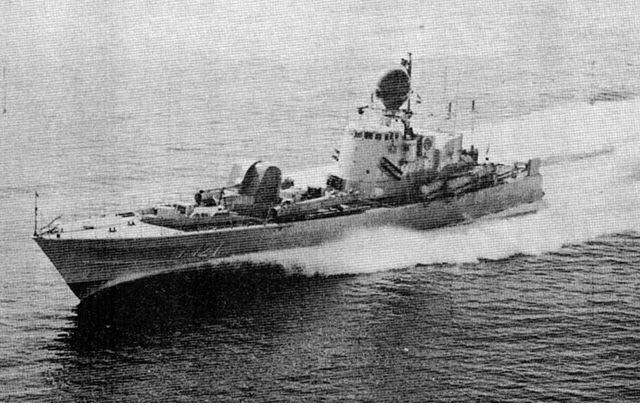
(To come…)
Spica II class FACs (1972)
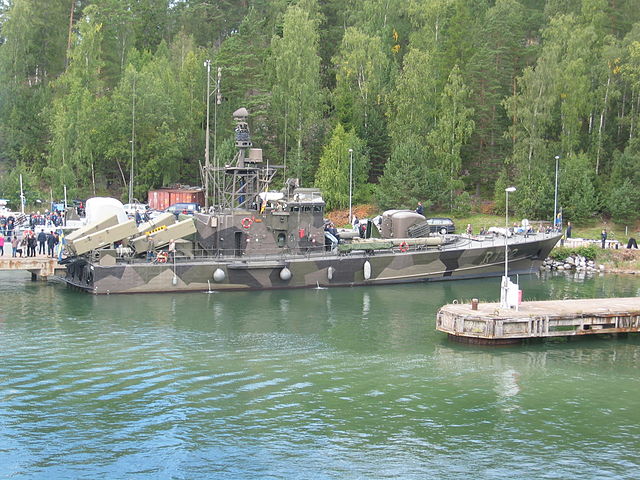
(To come…)
Hugin class FACs (1973)
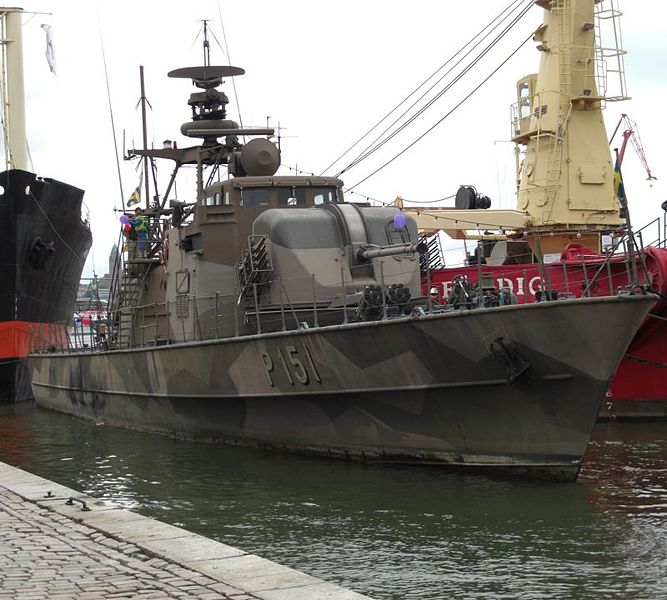
(To come…)
Swedish missile corvettes
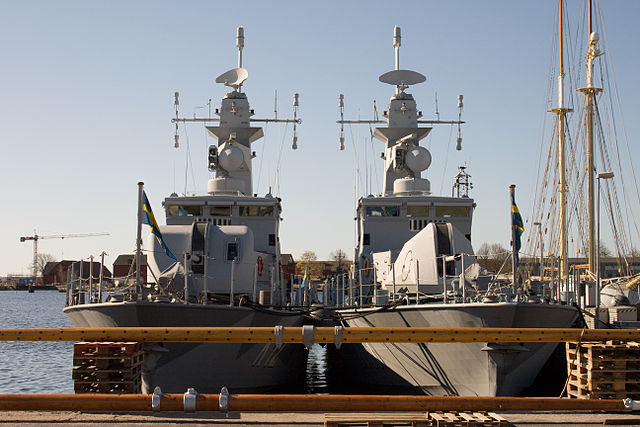
Stockholm (Spica III) class Corvettes (1984)
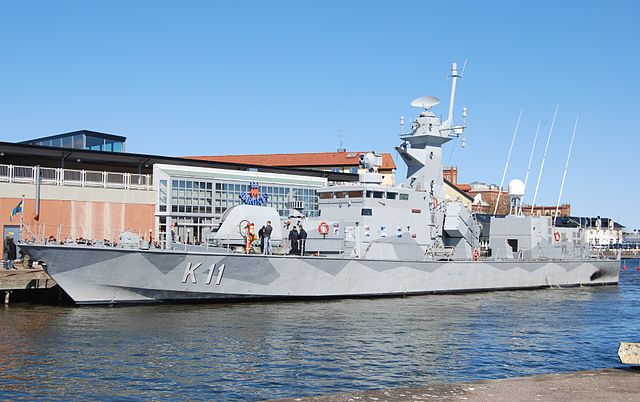
(To come…)
Goteborg class Corvettes (1989)
(To come…)
Smyge/YS-2000 class stealth FAC (1991)
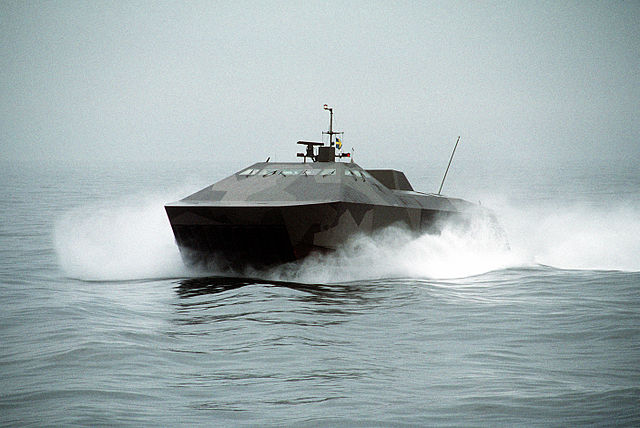
This post-cold vessel war was an early attept by Sweden to design a stealthy, superfast ship using a catamaran hull and surface effect for radar signature and audio reduction. Largely an experimental vessel, her name signified “Stealth” in Swedish. The broken-shaped hull was coated with radar-absorbent paint and materials. She tested various armaments, starting with the RBS-15 missile, and used a VDS for minehunting trials. (More to come)
Swedish patrol boats
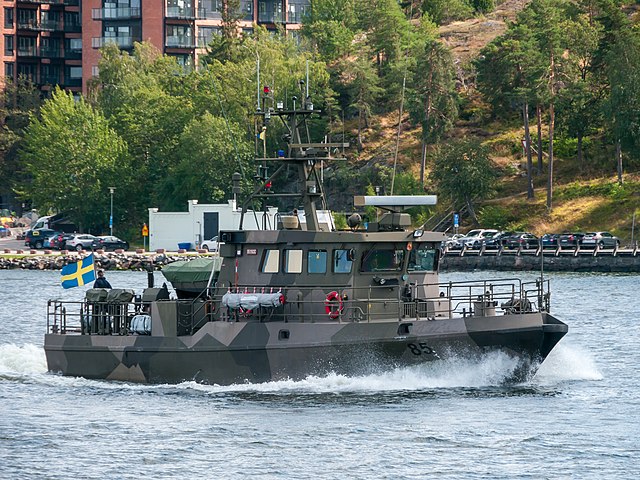
HMS Trygg of the Tapper class
V57 class PBs (1953)
(To come…)
Bevakningsbat 61 class PBs (1960)
(To come…)
Dalero class PBs (1984)
(To come…)
Tapper class PBs (1993)
(To come…)
Swedish mine warfare vessels
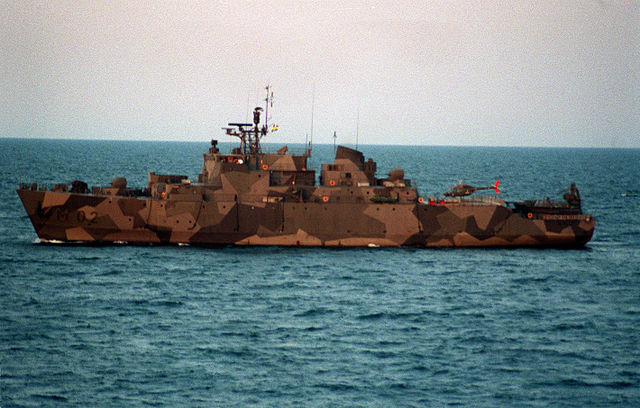
HMS Älvborg (M02)
Alvsborg class minelayers (1969)
(To come…)
Carslkrona minelayer (1980)
(To come…)
Orust class inshore minesweepers (1948)
(To come…)
Hano class coastal minesweepers (1952)
(To come…)
Arko class coastal minesweepers (1958)
(To come…)
Hsingen class inshore minesweepers (1960)
(To come…)
Gassten class inshore minesweepers (1972)
(To come…)
Landsort class inshore minesweepers (1984)
(To come…)
‘SAM’ class remote MCM crafts (1984)
(To come…)
Swedish armed icebreakers
As winter grips most of the Baltic, Swededen’s traffic and military operatiosn relied on icebreakers. In 1966, 4 were in service. The older, 1925 Atle just has been stricken in September 1966, but the 1932 Ymer stayed active until 1976, followed by the 1950s Thule, Oden and recent Tor class. They were armed by at least a 40 mm AA Bofors.
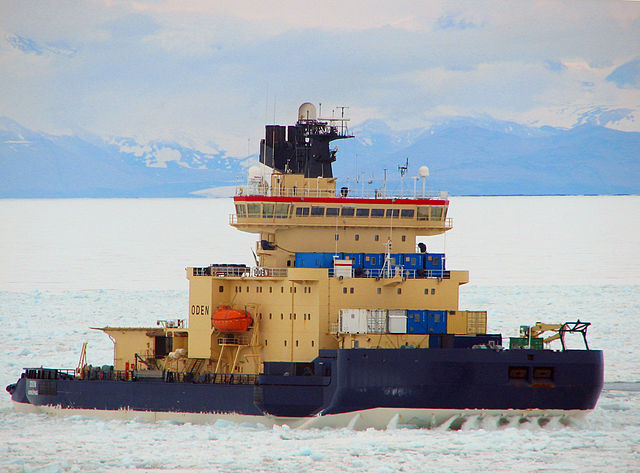
Thule (1951)
(To come…)
Oden (1956)
(To come…)
Tor class (1963)
(To come…)
Atle class (1973)
(To come…)
Oden (ii) (1988)
(To come…)


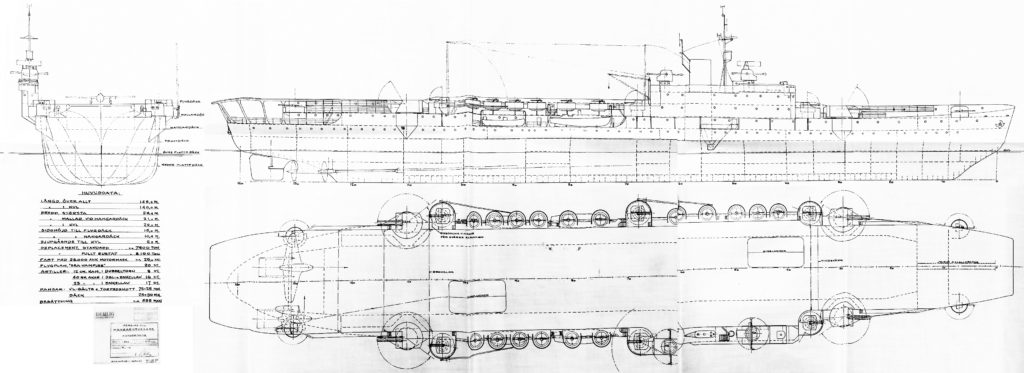
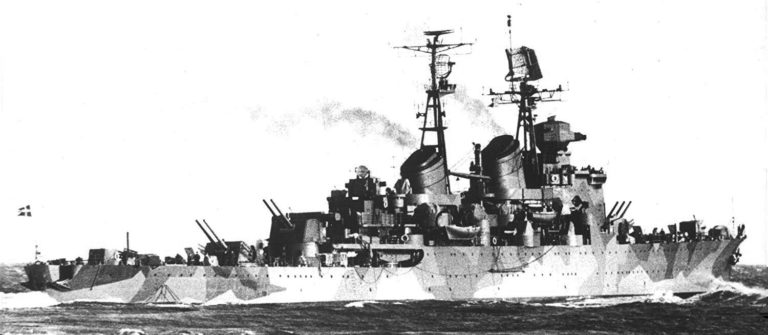
 Latest Facebook Entry -
Latest Facebook Entry -  X(Tweeter) Naval Encyclopedia's deck archive
X(Tweeter) Naval Encyclopedia's deck archive Instagram (@navalencyc)
Instagram (@navalencyc)





 French Navy
French Navy Royal Navy
Royal Navy Russian Navy
Russian Navy Armada Espanola
Armada Espanola Austrian Navy
Austrian Navy K.u.K. Kriegsmarine
K.u.K. Kriegsmarine Dansk Marine
Dansk Marine Nautiko Hellenon
Nautiko Hellenon Koninklije Marine 1870
Koninklije Marine 1870 Marinha do Brasil
Marinha do Brasil Osmanlı Donanması
Osmanlı Donanması Marina Do Peru
Marina Do Peru Marinha do Portugal
Marinha do Portugal Regia Marina 1870
Regia Marina 1870 Nihhon Kaigun 1870
Nihhon Kaigun 1870 Preußische Marine 1870
Preußische Marine 1870 Russkiy Flot 1870
Russkiy Flot 1870 Svenska marinen
Svenska marinen Søværnet
Søværnet Union Navy
Union Navy Confederate Navy
Confederate Navy Armada de Argentina
Armada de Argentina Imperial Chinese Navy
Imperial Chinese Navy Marinha do Portugal
Marinha do Portugal Mexico
Mexico Kaiserliche Marine
Kaiserliche Marine 1898 US Navy
1898 US Navy Sovietskiy Flot
Sovietskiy Flot Royal Canadian Navy
Royal Canadian Navy Royal Australian Navy
Royal Australian Navy RNZN Fleet
RNZN Fleet Chinese Navy 1937
Chinese Navy 1937 Kriegsmarine
Kriegsmarine Chilean Navy
Chilean Navy Danish Navy
Danish Navy Finnish Navy
Finnish Navy Hellenic Navy
Hellenic Navy Polish Navy
Polish Navy Romanian Navy
Romanian Navy Turkish Navy
Turkish Navy Royal Yugoslav Navy
Royal Yugoslav Navy Royal Thai Navy
Royal Thai Navy Minor Navies
Minor Navies Albania
Albania Austria
Austria Belgium
Belgium Columbia
Columbia Costa Rica
Costa Rica Cuba
Cuba Czechoslovakia
Czechoslovakia Dominican Republic
Dominican Republic Haiti
Haiti Hungary
Hungary Honduras
Honduras Estonia
Estonia Iceland
Iceland Eire
Eire Equador
Equador Iran
Iran Iraq
Iraq Latvia
Latvia Liberia
Liberia Lithuania
Lithuania Mandchukuo
Mandchukuo Morocco
Morocco Nicaragua
Nicaragua Persia
Persia San Salvador
San Salvador Sarawak
Sarawak Uruguay
Uruguay Venezuela
Venezuela Zanzibar
Zanzibar Warsaw Pact Navies
Warsaw Pact Navies Bulgaria
Bulgaria Hungary
Hungary

 Bundesmarine
Bundesmarine Dutch Navy
Dutch Navy Hellenic Navy
Hellenic Navy Marina Militare
Marina Militare Yugoslav Navy
Yugoslav Navy Chinese Navy
Chinese Navy Indian Navy
Indian Navy Indonesian Navy
Indonesian Navy JMSDF
JMSDF North Korean Navy
North Korean Navy Pakistani Navy
Pakistani Navy Philippines Navy
Philippines Navy ROKN
ROKN Rep. of Singapore Navy
Rep. of Singapore Navy Taiwanese Navy
Taiwanese Navy IDF Navy
IDF Navy Saudi Navy
Saudi Navy Royal New Zealand Navy
Royal New Zealand Navy Egyptian Navy
Egyptian Navy South African Navy
South African Navy






























 Ukrainian Navy
Ukrainian Navy dbodesign
dbodesign